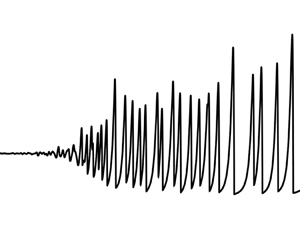Article contents
Roll waves in a predictive model for open-channel flows in the smooth turbulent case
Published online by Cambridge University Press: 20 March 2024
Abstract

A depth-averaged model for turbulent open-channel flows with breaking roll waves on a sloping smooth bottom is derived under an assumption of independence between the wall turbulence and the roller turbulence. The model includes four variables – the water depth, the average velocity, and two variables called enstrophy, the shear enstrophy and the roller enstrophy – which take into account the deviations of the velocity with respect to its depth-averaged value due to shear effect and roller turbulence, respectively. The four equations of the model are the mass, momentum, energy and shear enstrophy balance equations, with the mathematical structure of the Euler equations of compressible fluids, with an additional transport equation and with source terms. The system is hyperbolic. The roller enstrophy is created by shocks. A non-zero value of the roller enstrophy indicates a breaking wave and a turbulent roller. The model is solved by a fast and well-known numerical scheme, with an explicit finite-volume method in one step. The model is used to simulate periodic and natural roll waves with a good agreement with existing experimental results. There is no parameter to calibrate in the model, which gives it a predictive character.
Information
- Type
- JFM Papers
- Information
- Copyright
- © The Author(s), 2024. Published by Cambridge University Press
References
- 4
- Cited by


